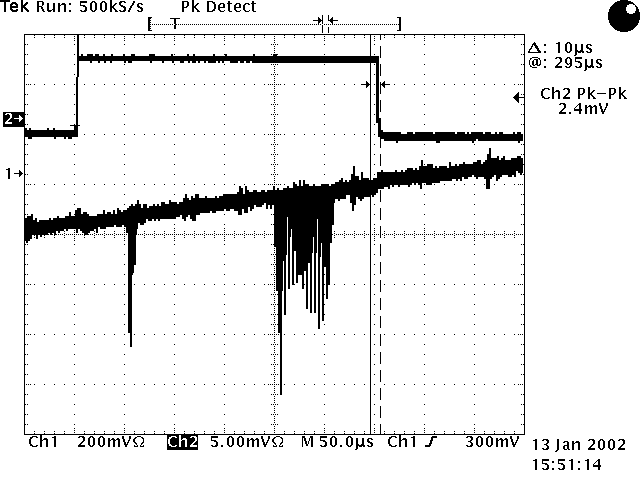URL: https://www.desy.de/news/news/archive_before_2010/2002/phot_1301/index_eng.html
Breadcrumb Navigation
Photoinjektor successfully commissioned
First Photoelectrons at the Photo Injector Test Facility at DESY Zeuthen

On January 13, 2002 the first electrons were observed at the Photo Injector Test facility at DESY Zeuthen (PITZ). These electrons were produced by photo emission. The photo effect is induced by adjusting a short laser pulse of about 260 nm wave length onto a cathode made of cesium telluride. Several billions of electrons are knocked out of the cathode material. In order to keep this large number of electrons collected in a cloud of small extension, it has to be accelerated instantaneously. For this purpose, the cathode is positioned inside a cavity resonator. Inside this resonator an electric field of high frequency quickly accelerates the electrons from the moment of emission. Due to the strength of the electric field of several millions of volts, the electrons reach a velocity near the speed of light just a few millimeters after their production!

One of the major tasks at PITZ is to overcome the strong mutual repulsion of the large number of electrons in such a small cloud. To prevent the electron cloud from diverging, focussing magnets (the blue solenoids on the photo on the right side) are arranged around the cavity. Furthermore, the synchronisation between the acceleration field and the laser pulse on a time scale of some 1/1,000,000,000,000 seconds is a big technical challenge. After their production, the electron cloud is detected as a beam spot on a screen, and their charge is measured in a beam dump.

The Photo Injector Test facility was build to develop an electron source with extraordinary good beam parameters, as they are necessary for the construction of Free Electron Lasers and future linear accelerators for particle physics. The exact measurement of the electron beam properties and the comparison with results of theoretical model calculations should lead to the optimization of the electron source for the mentioned applications.
The Photo Injector Test Facility was realized in a very short time: In September 1999 DESY decided to build the facility. The construction was finished in 2000, afterwards the installation of the necessary infrastructure and experimental setup components as well as tests of these components took place. The PITZ project has been realized in collaboration with the Max-Born-Institut, the BESSY GmbH, and the working group "Theory of Electromagnetic Fields" of the Technical University Darmstadt, and is supported by the HGF-Vernetzungsfond. Furthermore, physicists from INFN Mailand, YERPHI Yerevan, INR Troisk, and INRNE Sofia participate in the project.
The next goal of PITZ is the development of an electron source for the Free Electron Laser (FEL) at the TESLA Test Facility (TTF-II) at DESY Hamburg. This experiment is planned to be available for physicists from all over the world in 2004.


